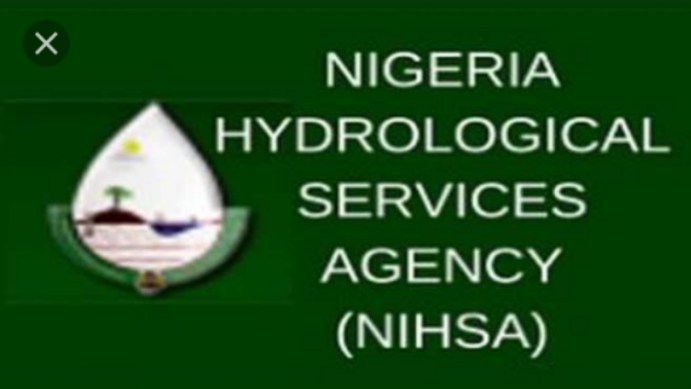Seven Nigerian states close to the banks of River Niger and its floodplains are listed by the Nigeria Hydrological Services Agency, NIHSA over possible flooding.
Consequently, Nigerians living in Anambra, Delta, Bayelsa, Kebbi, Niger, Kwara and Kogi states have been advised to immediately relocate to avoid the disaster.
In a statement in Abuja signed by Mr Clement Nze, the agency’s Director of Engineering Hydrology, the ageny said the middle Niger portion of the Niger basin (Niger Republic) experienced high flows last week with the flood advancing into the Lower Niger (Nigeria).
NIHSA noted that both Kainji and Jebba Dams were already spilling water downstream with the level of water in Lokoja downstream of the confluence standing at 8.69m.
“This value has exceeded the corresponding value of 8.57m that occurred on Aug. 29, 2012,” he said.
In a related development, the agency said the flooding that occurred in Kaduna on August 23 and August 24 had started arriving Shiroro Dam built on River Kaduna.
“In the event that Shiroro Dam equally starts spilling water, it will portend more danger downstream.
NIHSA had in May, released the 2018 Annual Flood Outlook, AFO, for the 36 states of the country.
The outlook projected that Sokoto, Niger, Benue, Anambra, Ogun-Osun, Cross River and Yobe states would have high risks of river flooding.
It also indicated that Lagos, Bayelsa, Rivers, Delta and Ondo states might experience coastal flooding.
The agency attributed this to a likely rise in the sea level and tidal surge, which would impact fishing and coastal transportation.
The outlook, which is a yearly projection by the agency, further indicated that flash and urban flood were expected to occur in Port Harcourt, Sokoto, Lagos, Ibadan, Kaduna, Yola, Abuja and Maiduguri.
Others are Awka, Abakaliki, Birnin-Kebbi, Kano, Yenogoa, Abeokuta, Ado-Ekiti, Lokoja, Lafia, Makurdi, Calabar, Jos, Owerri, Osogbo, Ilorin and Nsukka.
Gombe, Suleja, Karu, Nyanya, Abaji, Onitsha, Sapele, Hadejia and other major cities with poor drainage completed the list.
The Minister of Water Resources, Mr Suleiman Adamu, while presenting the outlook, explained that going by the 2018 AFO, water levels on the River Niger and Benue among other major river system, would rise and remain high during the rainy season.
He raised concern that some dams in the country were getting silted up, with the storage capacity also reducing.
He said this would cause a lot of the water to be spilled through the waterways.
Also, on July 15, 2018, the Nigeria Meteorological Agency (NIMET), had warned that many parts of the country were likely to experience flooding due to a shift in rainfall pattern caused by climate change.
NIMET DG, Prof Sani Mashi, while giving the warning, said that distortions had occurred in the pattern of rainfall leading to variation in the amount of rain expected in the country.
He explained that in line with NIMET’s 2018 Seasonal Rainfall Prediction, SRP, so much water would be made available on the surface between the last week of July and end of August.
According to him, once it rains, the ground cannot comfortably contain and absorb the water making it to run-off and resulting in so much water on the surface.
“Unless adequate provision is made to accommodate the amount of water that is running on the surface, definitely the likelihood of flood is going to be very high, especially in the areas that are adjoining the riverine locations,’’ he warned.

